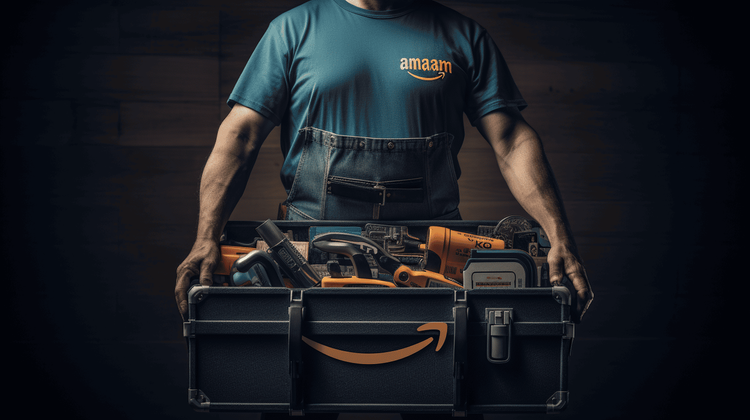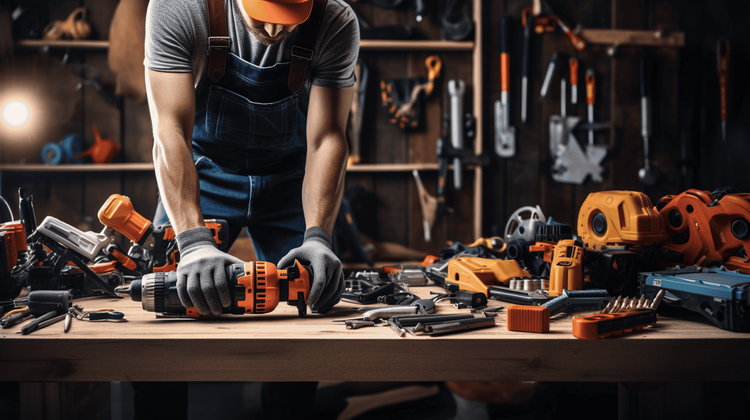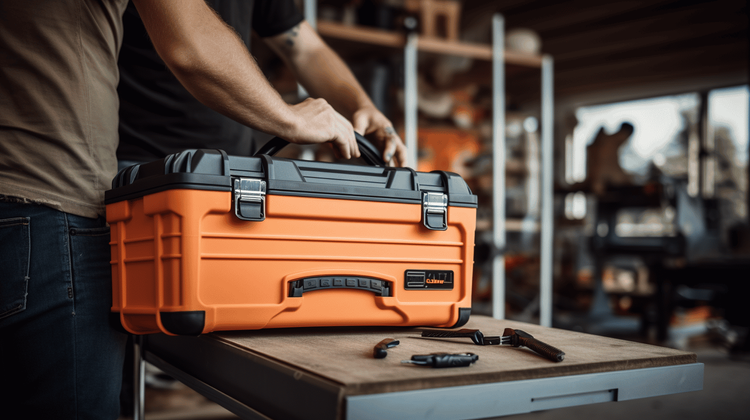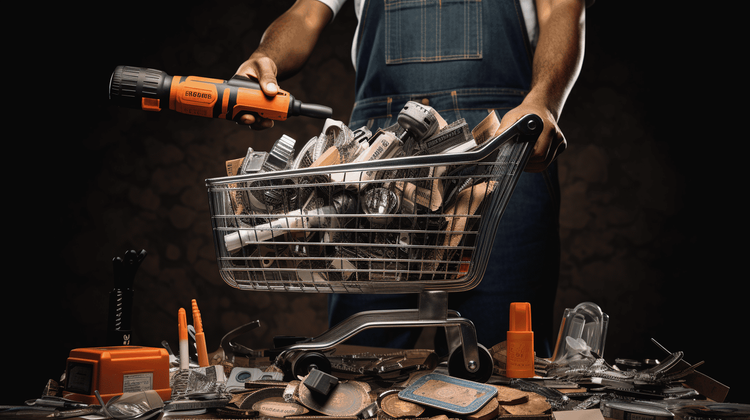Teeming Toolbox: Affordable Additions for the DIY Handyperson
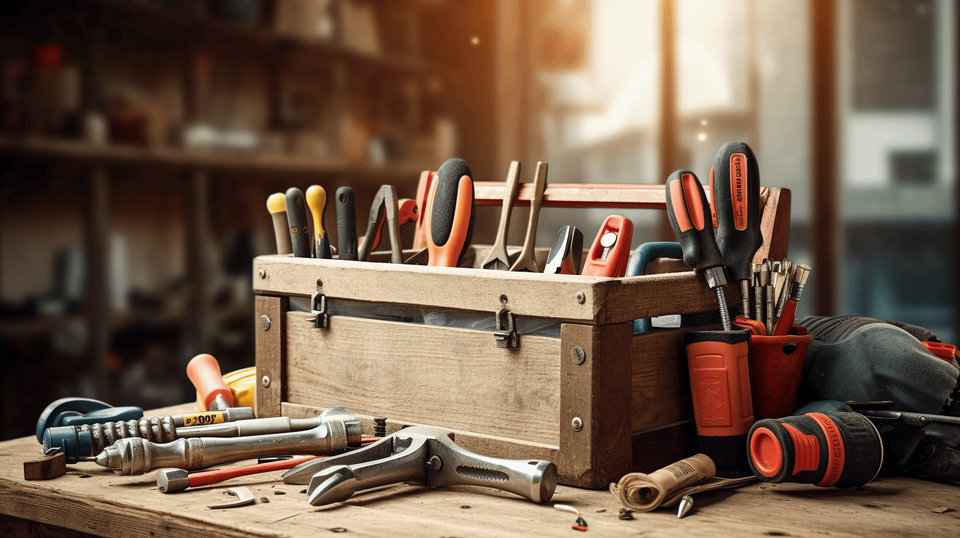
Have you ever felt the irresistible pull of DIY? The allure of crafting something with your own two hands, transforming humdrum chunks of wood (or bolts of fabric, or… well, you get the idea) into something unique and wonderful? If so, welcome to the club! We’re here to help you navigate the DIY world, and more specifically, how to tailor your toolkit without breaking the bank. 😊
Creating anything of your own often requires a set of quality tools, and while there are fancy, expensive gadgets out there screaming for your attention (and your wallet), you don't necessarily need to pay top dollar to achieve amazing results. In fact, assembling a versatile, affordable toolbox is not only possible but can also be quite the adventure.🔧🔨🧰
We'll guide you through the essentials for a handyperson's toolbox, tips for stocking up on a budget, and strategies to keep your beloved tools in excellent condition. Plus, we'll dive into the all-important topic of safety during DIY tasks. So, strap on your safety gear and let's get started in your DIY journey, shall we?👷♂️👷♀️
After all, brilliance might be the canvas but a good set of tools is the brush! 🎨
The Essentials of a DIY Handyperson's Toolbox
Every self-respecting handyperson knows that a well-stocked toolbox is indispensable for DIY projects. From fixing a leaky faucet, crafting a picture-perfect birdhouse for the backyard, to building custom-made bookshelves, the right tools can empower you to take on DIY projects like a pro. So, what are the essentials of a DIY handyperson's toolbox? Let's dive in and explore!
Common DIY Tools
There’s no denying that the world of DIY tools is vast and varied, but some staples universally find their place in every resourceful handyperson's collection. Here are some universal favorites:
- Hammer: A DIY toolbox’s leading star! It doesn't matter what you're building or repairing; a good, solid hammer is a must.
- Tape Measure: Accurate measurements are the secret sauce of successful DIY projects, making a tape measure an irreplaceable tool.
- Screwdrivers: A set of screwdrivers of various sizes will come in handy for tightening loose screws, opening paint cans, or countless other purposes.
- Pliers: These multipurpose tools, especially needle-nose and tongue-and-groove pliers, solve a variety of problems from bending wires to removing stubborn nails.
- Utility Knife: Handy for opening packages, cutting ropes, or scraping off old paint, a sharp utility knife is a valuable tool in every toolbox.
Remember, the aim is to stock your ‘toolbox essentials’ with a versatile range of items, each serving multiple purposes.
How to Choose Your Tools
Picking the right tools for your toolbox can feel like a Herculean task, especially when faced with a sea of shiny new gadgets, all promising to be the next 'must-have.' Yet, the secret to creating the perfect toolbox lies not in having the latest fancy tool, but in picking efficient, quality items that best serve your DIY needs.
When choosing your tools, you should consider:
- Quality Over Quantity: A handful of well-made, durable tools will serve you far better than a truckload of cheap, easily-broken ones. Look for items that come with a guarantee or warranty.
- Ergonomics & Your Comfort: Tools should feel comfortable to hold and use. Select tools with well-designed handles and grips, thus ensuring less strain on your hands.
- Frequency of Use: Consider how often you'll use a particular tool. If you're unlikely to use it beyond a single project, consider renting instead of buying.
“Every artist was first an amateur.” said Ralph Waldo Emerson.🎨 Diving into the DIY world, be patient, take your time to learn, and above all, don't be afraid to start small, and gradually add more to your toolbox as you grow more confident in your project skills. And don't forget, even the smallest toolbox can create the grandest masterpiece when wielded by a diligent and persistent handyperson. Be that handyperson. Fill up your toolbox and let your DIY journey begin!
Building Your DIY Toolbox on a Budget
Being the handyman or woman in your own home is an exciting and cost-effective venture, if done right! However, it's necessary to invest in the right tools to get started. In this section, we're going to delve deep into the art of building your DIY toolbox without breaking the bank. 🏦
Affordable Tools that Offer Great Value
Any DIY hobbyist worth their salt knows the importance of having the right tools. But that doesn't mean you have to splurge on the most expensive ones.
- Hammer: An indispensable part of any toolbox is a solid hammer. Don't worry, you don't need the ones with a gold-plated handle! 🛠️ A robust and ergonomically sound option that's reasonably priced will do just fine.
- Screwdrivers: An assortment of screwdrivers, with both flat-head and Phillips heads, are essential. Fortunately, they come quite affordably when bought in a set.
- Wrenches and pliers: Again, opt for a set. They're cheaper in the long run and offer more versatility.
- Measuring Tape: A retractable measuring tape doesn't cost much but goes a long way!
Remember, quality should be your guiding principle here, even when you're trying to save. Cheap tools that will break or malfunction after a few uses will end up costing you more in the long run, both in money and frustration.
Budgeting for Quality over Quantity
Rather than hastily purchase a vast array of tools, it's recommended to strategize your purchases. Start by identifying the tools you'll frequently use and invest in high-quality options. As your projects grow in complexity, you can incrementally add to your toolbox.
Remember, investing in one high-quality drill is preferable to purchasing a dozen poorly made ones. You don't need a tool for every possible DIY situation; sometimes, a clever hack or a multi-purpose tool can save the day.🪛🪚
Strategies for Saving Money on Tools
Even when budgeting wisely and valuing quality over quantity, there are additional strategies that can help you save money when building your toolbox:
- Seasonal Sales: Hardware stores frequently have seasonal sales. Keep an eye out for these, and you might nab some great deals!
- Buy Used: While some tools should always be bought new due to safety concerns, others like hammers or screwdrivers can be found in perfect working condition, second hand.
- Borrow or Rent: For those once-in-a-blue-moon projects, consider borrowing or renting the necessary tools.
So, with a smart approach, and by valuing quality over quantity, we hope you can see that building your DIY toolbox doesn’t have to feel like a daunting, expensive task. Keep these tips in mind, and you'll be well-equipped for your next project without making your wallet weep. Happy DIY-ing! 🎉
Maintaining Your Tools for Long Lasting Use
Keeping your tools in tip-top condition is no small feat. 🛠️ It's an ongoing process that requires diligence, patience, and proper understanding of each tool's unique maintenance needs. From the sturdy hammer to the delicate brush, each tool merits careful attention to ensure its durability and efficacy. This section will guide you through several practical steps that'll ensure your tools last the test of time.
Cleaning and Repairing Your Tools
Regular cleaning is the first line of defense in lengthening your tools' lifespan. Here's a simple guide to doing this effectively:
- Remove any dirt or debris after using a tool. A clean, dry cloth will often suffice for this.
- For more persistent grime on metal tools, consider using a wire brush or a mild detergent.
- Regularly inspect your tools for any signs of damage. As soon as you notice any, take immediate steps for repair to increase efficiency and prevent harm.
- Lubricate moving parts of tools such as screwdrivers and pliers to prevent rusting and stiffness.
Remember, a little effort put towards maintaining your tools now could save you a considerable amount of money down the line.
Proper Storage for DIY Tools
Ensuring your tools have a safe and suitable storage space is crucial to their longevity. Here are a few storage tips:
- Always dry your tools after use and before storage to prevent rusting.
- Group similar tools together and keep them in a clean, dry place.
- Store power tools in their original cases, if available. If not, find suitable, dry containers for them.
- Keep sharp tools such as saws and chisels separately to prevent accidents and keep them sharp.
Smart and thoughtful organization not only prolongs the life of your tools but also makes them easier to locate and use.
Preventing Tool Damage
Finally, respecting your tools and using them only as intended is a sure-fire way to prevent unnecessary damage. Don't be tempted to use a screwdriver as a chisel or a knife as a screwdriver- every tool has been designed for a specific task for a reason. By always using the correct tool for the job, you're ensuring that your toolbox will serve you effectively for many years to come.
Armed with these tips, ensuring the longevity of your tools should be a breeze. Remember, a well-maintained tool not only performs better but also ensures the safety of the user. Ready to prolong your tools' lifespan? Now, it's your turn to pick up the mantle! 👍
Safety Considerations for the DIY Handyperson
The innate satisfaction of crafting, repairing, or building something with your own two hands is such a precious feeling, isn't it? As a handyman or handywoman, you feel a sense of accomplishment when you transform flimsy materials into a robust, useful object. Or when you skillfully troubleshoot a tricky wiring issue, keeping the darkness at bay with the flick of a switch!
But like all things in life, being a DIY handyperson comes with its share of risks. 🚧 And, safety should always be your primary concern. So, let's dive into some significant safety considerations when embarking on your DIY journey.
Safety Equipment and Practices
Believe it or not, safe DIY projects begin even before you've picked up any tools! They start with equipping yourself with protective gear, like safety gloves, hard hats, goggles, and sturdy shoes. The aim here is to shield vital parts of your body from accidental injuries.
Here are a few essential safety practices to consider:
- Always read and understand the instructions on every tool and material you use. 📚 Knowing what you're working with can dramatically reduce the risk factor.
- Keep your workspace clean and organized. Debris lying around can quickly become potential hazards.
- Ensure your workspace is well lit. Working in a poorly lit area increases the chance of mishaps.
- Work at a steady, comfortable pace. Trying to hurry things up can lead to mistakes, or worse, injuries.
Hazards of Ignoring Safety Precautions
While it's all fun to delve into the nuts and bolts, ignoring safety precautions can lead you down a slippery slope. What starts as a harmless project could quickly transform into a disastrous situation. For instance, constantly working without safety gear could lead to severe bodily harm such as eyesight damage from flying particles or hands getting injured due to sharp objects.
Ignoring safety measures while dealing with electrical work can result in electrical shocks or fires. Your house becomes your laboratory for these DIY projects, and any carelessness can also put your loved ones at risk.
Yes, DIY projects are about freedom and creativity, but remember the cardinal rule: Safety comes first, always and without exception. After all, the goal is to create something beautiful without compromising your wellbeing. To all the DIY champs out there - let's make it a safe ride!
Conclusion: Growing Your DIY Skills and Toolbox
As the intriguing journey of your DIY craftsmanship unfolds, remember: knowledge is a never-ending quest—same as the zest to uplift your toolbox. 🛠 The accumulation of tools is a consummate blend of necessity, affordability, and personal choice. However, how you care for your tools defines their longevity along with your safety. It's important to focus on regular maintenance, proper storage, and using safety procedures to boost the productivity and longevity of your tools.
What sets apart a good DIY enthusiast from a great one is their acknowledgment of the value of good organization. The Bit Holder Keychain, one of the bestsellers at Ultra Handy, helps arrange your screwdriver bits, making them easily accessible whenever required. This illustrates that your toolbox is more than a mere collection of tools. It is an embodiment of effectiveness, efficiency, and safety.
At Ultra Handy, we enhance your journey with a range of tools and supplements designed specifically for those who cherish the thrill of creating with their own hands. After all, isn't it fulfilling to perform tasks all by oneself? 🙌 So go ahead, get your hands-on, build, repair, and create fascinating projects with your upgraded toolbox.
Keep adding, nurturing, and flaunting your DIY skills, and trust us to make your journey Ultra Handy! 😄 This brings us to a close on the topic of expanding your DIY skills and toolbox, but watch this space for more insights, tips, and tricks on all things DIY.
Frequently Asked Questions
- What are some affordable tools for DIY handypersons?Some affordable tools for DIY handypersons include: 1. Screwdriver set, 2. Adjustable wrench, 3. Hammer, 4. Tape measure, 5. Level.
- Why are these tools essential for DIY projects?These tools are essential for DIY projects because they help with tasks such as assembling furniture, hanging pictures, fixing loose screws, measuring distances, and ensuring things are level and straight.
- Where can I find affordable tools for DIY projects?You can find affordable tools for DIY projects at hardware stores, home improvement centers, online marketplaces, and even thrift shops. Look for sales, discounts, and seasonal promotions to get the best deals.
- Do I need expensive tools for DIY projects?No, you don't necessarily need expensive tools for DIY projects. Affordable tools can get the job done effectively, especially for occasional use or small-scale projects. It's important to choose tools that are durable and of decent quality.
- Are there any specific safety measures to consider when using DIY tools?Yes, when using DIY tools, always wear appropriate safety gear such as gloves and goggles. Read and follow the instructions provided with the tools, avoid distractions, and use the tools in a well-ventilated area. If unsure about safety, seek professional assistance.
